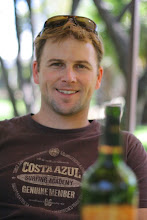Step 1: Cut the damaged section out with a razor blade and pull out any loose core foam. Once you have the right shape, bevel the edge of the sandwich with the razor blade. Remove any decals from the deck a couple inches from the edge of the repair so the new fabric will bond. Sand the perimeter for good adhesion.
Step 2: Cut a piece of foam the size of the opening. Sand the core foam and the repair foam to get the closest fit possible. I found it easiest to sand the core foam flat then round the top of the repair plug to match the deck once it fits snug. Sand the plug to at least 1/4in below the deck to allow for the top sandwich layer.
Step 3:
Cut out the top sandwich layer a little oversized to allow for shaping to match the beveled edge of the repair. Get the top layer as close of a fit as possible with the plan to curve the top layer to match the curve of the deck with weights.
Step 4: Cut a piece of light fiberglass cloth to go into the repair first. Cut a piece of fiberglass cloth or carbon fiber cloth to go over the plug. Both large enough to flare out over the deck.
Step 5: Mix the epoxy resin and paint the resin into the repair over the core foam with a disposable paint brush. Lay in the first layer of light cloth. Soak the cloth thru then add the foam plug and more resin. Next, lay the middle layer of cloth down. Lastly, place the 1/4in foam sheet on top and weight it sufficiently to curve to the deck. Let everything set up. The final sanding and deck layer will be done separately.
Step 6: Sand the top foam layer to be flush with the deck. Cut the final top fabric to match the repair with 1-2in overlap around the edges. Mix the resin and finish the repair with the top layer. Lastly, I use clean white beach sand for anti-skid which I sprinkle lightly over the exposed areas of the repair as its starting to set up. Alternatively, as shown here, you can lay a sheet of Mylar over the repair when it's setting up to get a very smooth finish. Be sure to work all the bubbles out and make sure the edges don't lift up or you'd be better off without the Mylar. The Mylar is especially helpful with the carbon Kevlar weave since it doesn't sand well.



















 Peter making the long walk back.
Peter making the long walk back. Matt comes off the water stoked after a long day.
Matt comes off the water stoked after a long day. 

 During our college days we would make weekend trips here to windsurf and at that time the PWA had this on their North America contest tour. It's been many years since sailing here but it was quite fun and challenging at the same time, wind speeds and directions were all over the place!
During our college days we would make weekend trips here to windsurf and at that time the PWA had this on their North America contest tour. It's been many years since sailing here but it was quite fun and challenging at the same time, wind speeds and directions were all over the place! 







